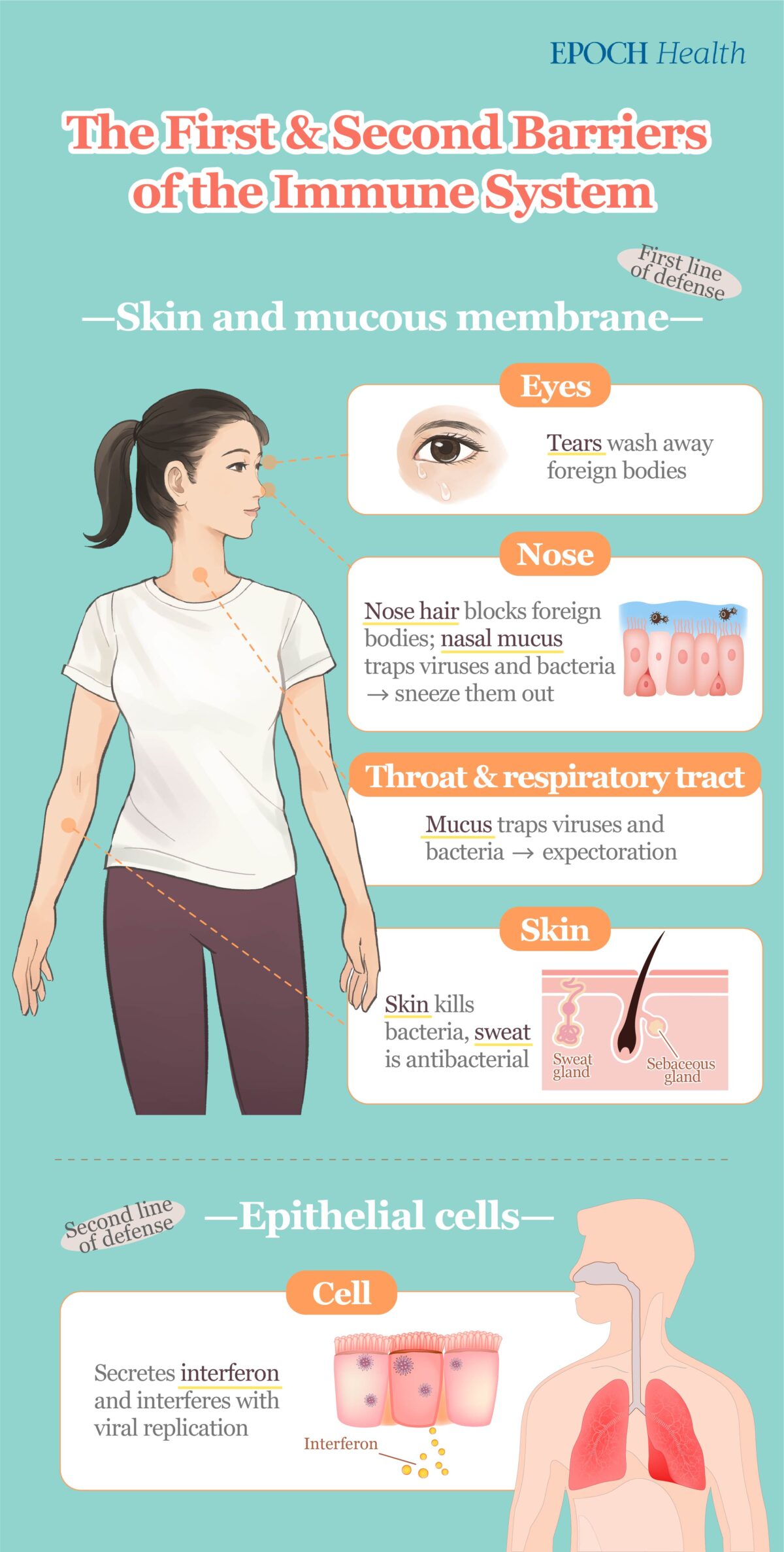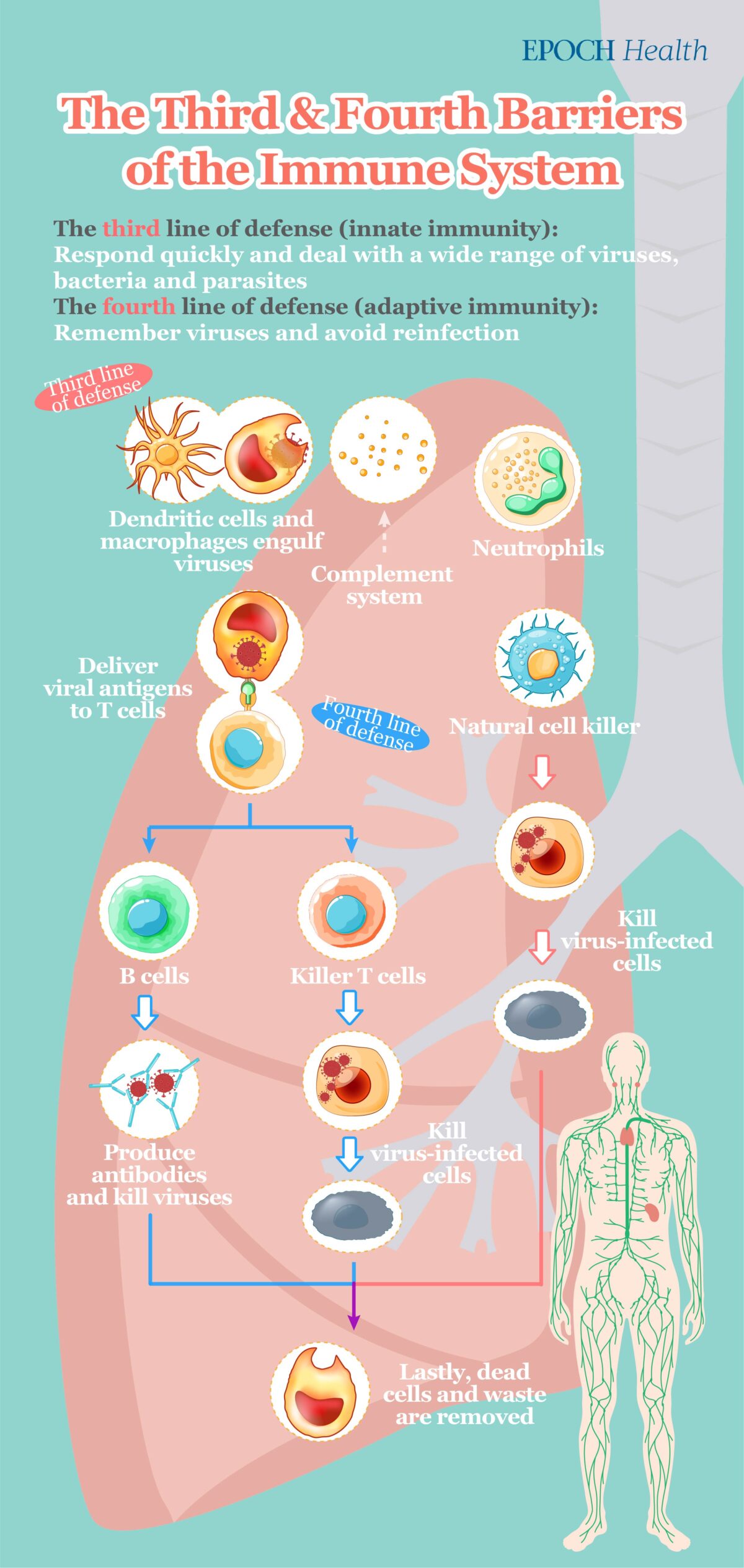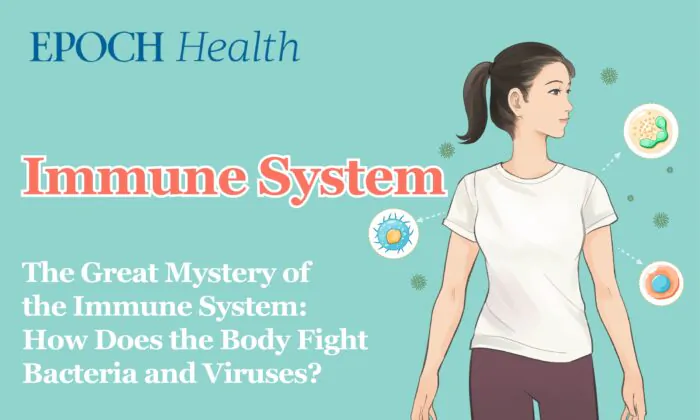There is an increasing number of infectious diseases circulating around the world, from influenza to SARS to COVID-19. Your immune system plays a key role in fighting off these infectious diseases. So how does the immune system work to fight viruses and bacteria? What factors affect your immunity? This article will answer all your questions with diagrams.
The human immune system is quite sophisticated, with various immune cells involved. Their role in the body is like that of an army, resisting the invasion of foreign pathogens and defending the body’s health. Pathogens refer to agents that can cause various diseases after entering the body, including viruses, bacteria, molds, parasites, etc.
The First Immune Barrier: The Skin and Nose Keep Viruses Out
The immune system’s first barrier includes skin, nose hair, tears, etc. These are excellent physical barriers that can keep pathogens out of the body. If the body is a country, then the first barrier could be considered its “defensive wall.”

Skin
The skin has structures like sebaceous glands and sweat glands. Sebaceous glands secrete fatty acids to kill bacteria, while sweat glands produce salt that transforms the surface of the skin into an environment where bacteria are less likely to survive.
Eyes
Tears wash away foreign bodies that reach the surface of the eyeball.
Nose
Nose hairs block larger foreign bodies from entering the nostrils, while nasal mucus traps smaller viruses and bacteria and expels them via sneezing.
Respiratory tract
There is also mucus in the throat and respiratory tract. After the mucus traps viruses and bacteria, the tiny cilia on the walls of the airways will move the mucus that envelops the germs toward the mouth; finally, they are coughed up as phlegm.
The Second Immune Barrier: The Body Secretes Key Antiviral Substance
The second immune barrier is like the “garrison” patrolling the “defensive wall.” Unlike the “defensive wall” that blocks or drives pathogens out of the body, the garrison will actively attack pathogens through the use of a few mechanisms.
For example, there are epithelial cells in the nasal cavity, throat, trachea, bronchi, lungs, etc., and some epithelial cells will produce interferon in response to infection.
Interferon is an important antiviral substance. After it binds with uninfected cells, it has the unique ability to interfere with the replication of the virus, further preventing the infection from spreading, hence the name “interferon.”
Innate Immune System: Rapid Response, Extensive Defense
If viruses and bacteria make it past these first two lines of defense, a sophisticated immune system is in place to fight them off. Generally speaking, the immune system can be divided into innate immunity and adaptive (acquired) immunity, which are the third and fourth immune barriers.
The innate immune system is the “advanced strike force” sent by the body when it encounters an unknown infection. Compared with the adaptive immune system, it can fight a wider variety of pathogens, but the protection provided is shorter-term. Granulocytes, macrophages, natural killer cells, and the complement system are part of the innate immune system.

Granulocytes are divided into neutrophils, eosinophils, and basophils.
The number of neutrophils in the human body is the highest among the three, and they are produced at a very fast rate. They are also the first responders after infection and play the role of “general police” in innate immunity.
Eosinophils are very effective in fighting parasites. Parasites are multicellular organisms that are difficult to ingest. However, eosinophils do not destroy parasites by phagocytosis (ingesting); instead, they release chemicals that penetrate the cell membrane to attack them. Hence, the role of eosinophils is more like a “disinfector.”
Basophils trigger the body’s inflammatory response by releasing chemicals, and they are a common factor in allergic reactions. They are like “firefighters” who are involved when an area becomes inflamed (like when something is literally on fire).
The function of macrophages is to carry out phagocytosis, which can engulf pathogens in large quantities. Compared with neutrophils, macrophages are more powerful in eliminating pathogens and can fight pathogens for a longer period.
In addition to macrophages, dendritic cells also engulf pathogens.
After ingesting the pathogen, macrophages and dendritic cells will analyze it and pass relevant information to the adaptive immune system, allowing it to further deal with the enemy. These are the “communication bridge” between the innate and adaptive immune systems. Although they both have similar functions, each has its strengths. Macrophages have a stronger phagocytic ability, like “riot police,” while dendritic cells have better intelligence analysis and transmission capabilities, like “signalers” who deliver messages.
Natural killer cells are also one of the advanced troops, and their main function is to kill virus-infected cells and mutated cancer cells in the body.
The complement system is like a “bullet,” which can kill various pathogens, bacteria, viruses, or abnormal cells. In addition, it can enhance the phagocytes’ ability to engulf pathogens through opsonization. Simply put, if pathogens are white rice, the complement system is like the gravy that adds flavor, prompting phagocytes to eat more. Moreover, the complement system can promote other immune responses, such as inflammatory responses, secretion of substances that regulate immune functions, and so on.
Adaptive Immune System: Remember Viruses and Avoid Reinfection
The adaptive immune system is a well-trained “special force” capable of destroying certain pathogens (with immune specificity).

The innate immune system will take the lead in fighting when encountering an unknown source of infection. At the same time, it also has an important task of identifying the identity of the pathogen and notifying the adaptive immune system to dispatch troops that can quickly fight against the pathogen. These “special forces” mainly include T cells and B cells.
After the innate immune system is activated, dendritic cells and macrophages begin to engulf pathogens, analyze and identify them, and present important information to T cells.
After receiving the signal, T cells will begin to target and kill pathogens, then prompt B cells to start producing antibodies. T cells and B cells will “remember” the characteristics of the invading pathogen. If the same pathogen invades next time, these special forces can directly identify the pathogen and quickly attack the invader without going through the innate immune system.
6 Factors That Affect Your Immunity
The various cells in the immune system work together in a precise way to complete the mechanism of fighting the enemy. So what factors affect the strength of the immune system?
Age
The immune system gradually weakens with age, mainly because the aging of the thymus and bone marrow leads to reduced production of T cells and B cells. Therefore, the immunity that the elderly acquire through vaccination is lower than that of young people and children.
Diet
Eating a balanced and nutritious diet is one of the keys to boosting immunity. The production of immune cells, antibodies, and coenzymes in the human body requires raw materials, all of which come from the daily intake of food.
Sleep
Adequate sleep can strengthen a person’s immunity, and numerous studies have proven that sleep is highly linked to immune function. For example, Carnegie Mellon University once conducted a study that found that people with poor sleep quality were prone to colds. Additionally, other studies on immunity have found that after vaccination, people who get enough sleep have higher levels of antibodies in their bodies than those who do not get enough sleep.
Medication
Long-term use of some medications, such as steroids, can suppress the body’s immune response and reduce its ability to fight germs. If the body is infected during this period, the course of the disease will be prolonged.
Exercise
Regular exercise can speed up the body’s metabolism, promote blood circulation, and boost immunity. In addition, studies have shown that activities such as jing zuo (sitting still) and meditation can increase the number of immune system substances, such as interleukin (communication mediator between immune cells), tumor necrosis factor, etc.
Stress
When a person is under stress, the body produces a higher-than-normal level of cortisol. A brief increase in cortisol can boost immunity. However, over time, the body can get used to having too much cortisol in the blood, which weakens the immune system and hinders T-cell proliferation.


